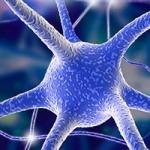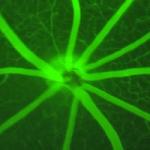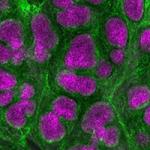
Mustapha Bouhrara, Ph.D.
Stadtman Investigator
Magnetic Resonance Physics of Aging and Dementia Unit
NIA
Research Topics
The MRPAD Unit performs clinical and translational biophysical and physiological studies of the human central nervous system (CNS) to advance knowledge in health and disease, foster biomedical innovation, and improve public health outcomes through research and development, aligning with the NIH and HHS mission. The overarching mission of MRPAD is to establish links between functional and structural changes that occur in normative brain aging and Alzheimer's disease and related dementias (ADRD), and to develop accurate pre-symptomatic biomarkers that will assist with differential diagnosis, characterize disease mechanisms, monitor disease progression, and facilitate development of therapeutics. This research program incorporates three major distinct, but complementary, components.
The first component is developing novel magnetic resonance imaging (MRI) techniques and biomarkers, such as methods that are based on multicomponent relaxometry and diffusion, magnetization transfer, water exchange, high-dimensional imaging, susceptibility imaging, and cerebral functioning, for the quantification of fundamental determinants and properties of the CNS, including myelin content, axonal and neurite densities, neuroinflammation, iron accumulation, sodium concentrations, cerebral blood flow, and cerebrovascular reactivity.
The second component of this research program involves studying the effects of chronic diseases as well as reversible and nonreversible metabolic, functional, vascular, and genetic risk factors on brain health and hallmarks of aging and dementias, as probed using these imaging biomarkers of CNS's microstructure, biochemistry, composition, and function.
The third component is studying the impact of chronic diseases and risk factors on changes in determinants of cerebral tissue, as probed using MRI biomarkers, and concomitant functional, behavioral and cognitive impairments, in addition to combining them with liquid biopsy biomarkers to further elucidate the mechanisms underlying aging physiology and ADRD pathophysiology.
Additionally, ongoing clinical trials are leveraging these biomarkers to target neurodegeneration and cognitive decline, identify at-risk populations, assess treatment efficacy, and advance therapeutic strategies for ADRD. These trials are a vital part of the research program, helping to translate scientific discoveries into actionable treatments.
Much of this work incorporates measures collected in the Baltimore Longitudinal Study on Aging (BLSA), the Genetic and Epigenetic Signatures of Translational Aging Laboratory Testing (GESTALT) cohort, the Coronary Artery Risk Development in Young Adults (CARDIA) study, the UK Biobank (UKB) measures, the Dominantly Inherited Alzheimer Network (DIAN) cohort, and the Alzheimer's Disease Neuroimaging Initiative (ADNI) data.
Biography
After finishing his undergraduate degree in physics in Morocco, Dr. Mustapha Bouhrara moved to France where he obtained a professional Master's degree in biomedical engineering from Sophia Antipolis University of Nice in 2007, a research Master's degree in morphological, metabolic, functional, and molecular imaging from Claude Bernard University of Lyon in 2008, and his Ph.D. in biophysics and magnetic resonance imaging from Blaise Pascal University of Clermont-Ferrand in 2012. He was a Postdoctoral Visiting Fellow, Research Fellow, and Staff Scientist at the Laboratory of Clinical Investigation of the National Institute on Aging (NIA) from 2012 until 2020. In 2020, Dr. Bouhrara obtained the prestigious Stadtman Investigator Award. He is currently serving as a Principal Investigator and the Chief of the Magnetic Resonance Physics of Aging and Dementia (MRPAD) Unit at the NIA of the National Institutes of Health (NIH). Dr. Bouhrara has received various awards, including the NIA Director's Scientific Award in 2017, 2019 and 2024, the NIH Award of Merit in 2018, and the NIH Director's Scientific/Medical Award in 2024 for outstanding accomplishments bridging the gap in neuroscience through pioneering work in brain MRI by combining physics, mathematics, signal processing and neurobiology, with specific emphasis on aging phenotypes, neurodegeneration, and Alzheimer's disease and related dementias. He also received the 2024 Mentoring NIA Director's Award for outstanding mentorship, marking the fourth time he has been so honored.
Selected Publications
- Faulkner ME, Gong Z, Bilgel M, Laporte JP, Guo A, Bae J, Palchamy E, Kaileh M, Bergeron CM, Bergeron J, Church S, D'Agostino J, Ferrucci L, Bouhrara M. Evidence of association between higher cardiorespiratory fitness and higher cerebral myelination in aging. Proc Natl Acad Sci U S A. 2024;121(35):e2402813121.
- Gong Z, Bilgel M, Kiely M, Triebswetter C, Ferrucci L, Resnick SM, Spencer RG, Bouhrara M. Lower myelin content is associated with more rapid cognitive decline among cognitively unimpaired individuals. Alzheimers Dement. 2023;19(7):3098-3107.
- Laporte JP, Faulkner ME, Gong Z, Akhonda MABS, Ferrucci L, Egan JM, Bouhrara M. Hypertensive Adults Exhibit Lower Myelin Content: A Multicomponent Relaxometry and Diffusion Magnetic Resonance Imaging Study. Hypertension. 2023;80(8):1728-1738.
- Bouhrara M, Triebswetter C, Kiely M, Bilgel M, Dolui S, Erus G, Meirelles O, Bryan NR, Detre JA, Launer LJ. Association of Cerebral Blood Flow With Longitudinal Changes in Cerebral Microstructural Integrity in the Coronary Artery Risk Development in Young Adults (CARDIA) Study. JAMA Netw Open. 2022;5(9):e2231189.
- Bouhrara M, Spencer RG. Improved determination of the myelin water fraction in human brain using magnetic resonance imaging through Bayesian analysis of mcDESPOT. Neuroimage. 2016;127:456-471.
Related Scientific Focus Areas



Biomedical Engineering and Biophysics
View additional Principal Investigators in Biomedical Engineering and Biophysics


This page was last updated on Tuesday, March 25, 2025